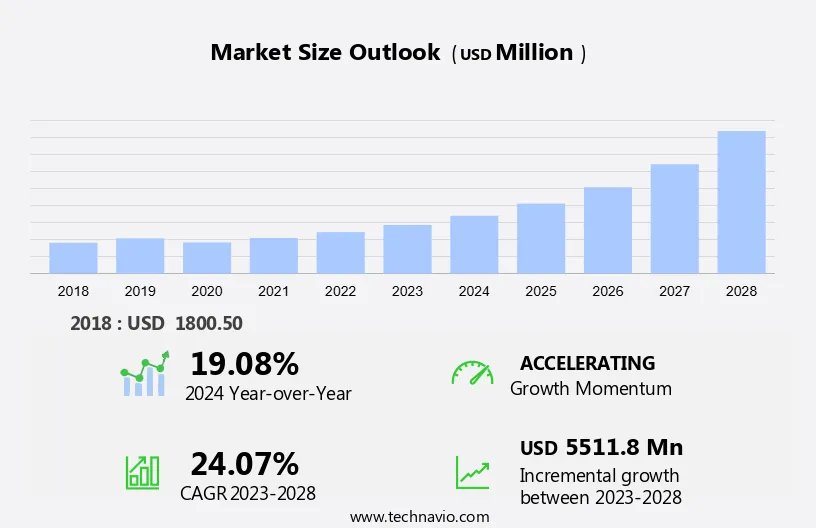The global smart thermostats market size is estimated to grow by USD 5.51 billion from 2024-2028, according to Technavio. The market is estimated to grow at a CAGR of 24.07% during the forecast period. Growth in number of hvac equipment users is driving market growth, with a trend towards increasing focus on integrated building management systems. However, high initial prices affect demand for smart thermostats poses a challenge.
Key market players include Alphabet Inc., Carrier Global Corp., Centrica Plc, Computime Group Ltd., Control4 Corp., ecobee, EcoFactor Inc., Emerson Electric Co., GridPoint Inc., Honeywell International Inc., Johnson Controls International Plc., Legrand SA, NETATMO SAS, Nortek, Radio Thermostat Co. Of America, Robert Bosch GmbH, Robertshaw Controls Co., Schneider Electric SE, tado GmbH, and Venstar Inc.
Market Driver
The demand for energy efficiency and cost savings in both residential and commercial buildings is driving the growth of advanced systems for lighting, cooling, heating, and ventilation. Integration of these systems, such as lighting and HVAC, under one platform is optimizing energy usage and improving building management systems. This integration enables the regulation of temperature, humidity, and light based on occupancy levels, leading to energy savings and a more comfortable environment. Smart thermostats are a key component of these integrated systems, allowing for the adjustment and control of heating and cooling based on occupancy and energy usage patterns. The trend towards smart buildings is increasing, with the installation of these advanced systems to accommodate integration with existing building automation or upgraded systems. This integration results in optimized energy consumption, enhanced profit margins, and a more comfortable internal environment. The global smart thermostats market is poised to benefit from this trend in the near future.
The Smart Thermostats market is experiencing significant growth, driven by trends in HVAC systems, IoT technology, and customer-centric services. Remote appliance control, energy efficiency, and cloud technology are key features. Motion sensors, power usage monitoring, networking, and AI technologies enhance user experience. Companies like ScienceSoft offer skilled professionals for upgrading traditional thermostats to smart ones. Residential and commercial applications, including heating, cooling devices, and air conditioners, benefit from energy savings. Older people and energy efficiency standards also fuel demand. IoT infrastructure and wireless networks enable geofencing and temperature control via smartphones. Energy management solutions, such as Ecobee API with an HTTP-based interface, facilitate energy conservation and reduce power cost and electricity consumption. Smart gadgets continue to lead the way in home automation and energy savings.
Market Challenges
- The high initial cost of smart thermostats is a significant barrier for consumers, as most models are do-it-yourself (DIY) types. This requirement for professional installation adds to the overall expense, making traditional thermostats, which cost around USD50, a more attractive option for many. This high cost may hinder market penetration and negatively impact the growth of the smart thermostat market during the forecast period. Major vendors such as Nest Labs, Honeywell International, and ecobee Inc. Need to find ways to reduce the cost of their smart thermostats or offer more affordable installation options to expand their customer base.
- The market for smart thermostats is growing as consumers seek energy conservation and cost savings. Coolers, heaters, and air conditioners account for a significant portion of household energy consumption and power costs. Smart thermostats, as energy management solutions, enable users to control their HVAC systems using smartphones and APIs like Ecobee's HTTP-based interface. These devices offer energy savings and ROI through user behavior analysis and monitoring capabilities. However, challenges include data security concerns, cost of devices, and user adoption in industrial settings. Smart gadgets like Google Nest use temperature and humidity sensors, IR technology, and wireless connectivity like ZigBee and Wi-Fi. The market is segmented into Wi-Fi, standalone, and connected segments, with the commercial segment showing potential for significant growth.
Read More

